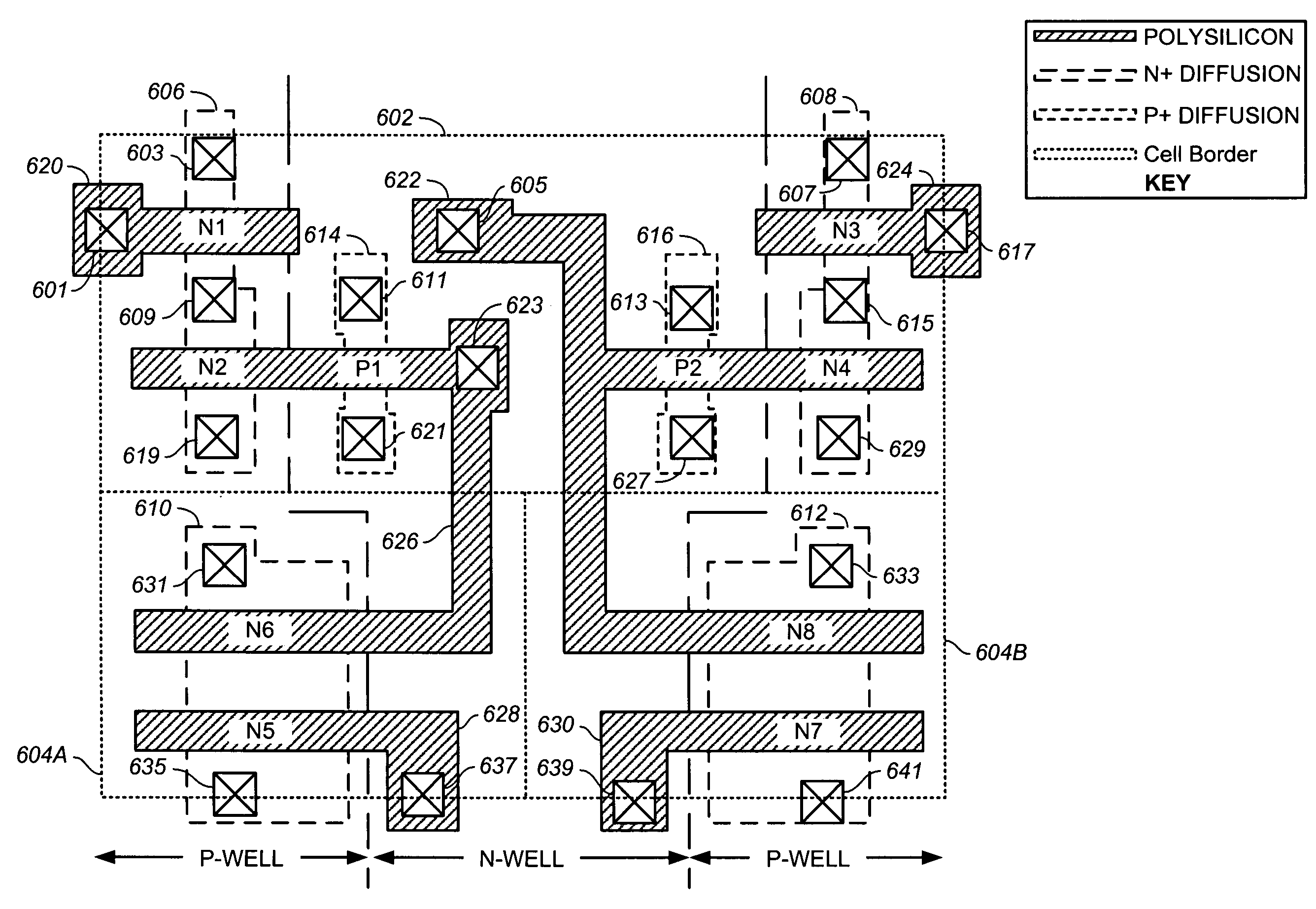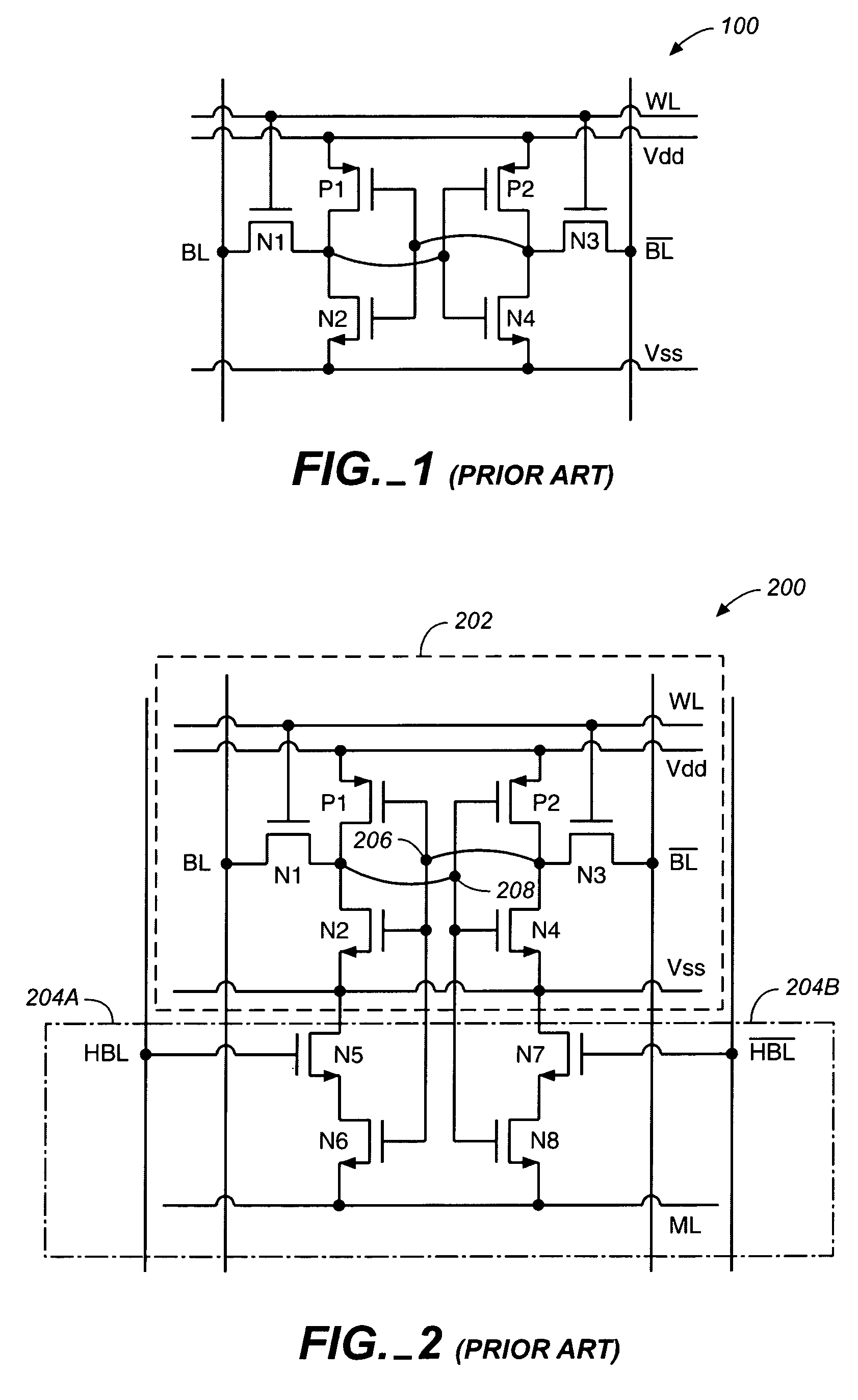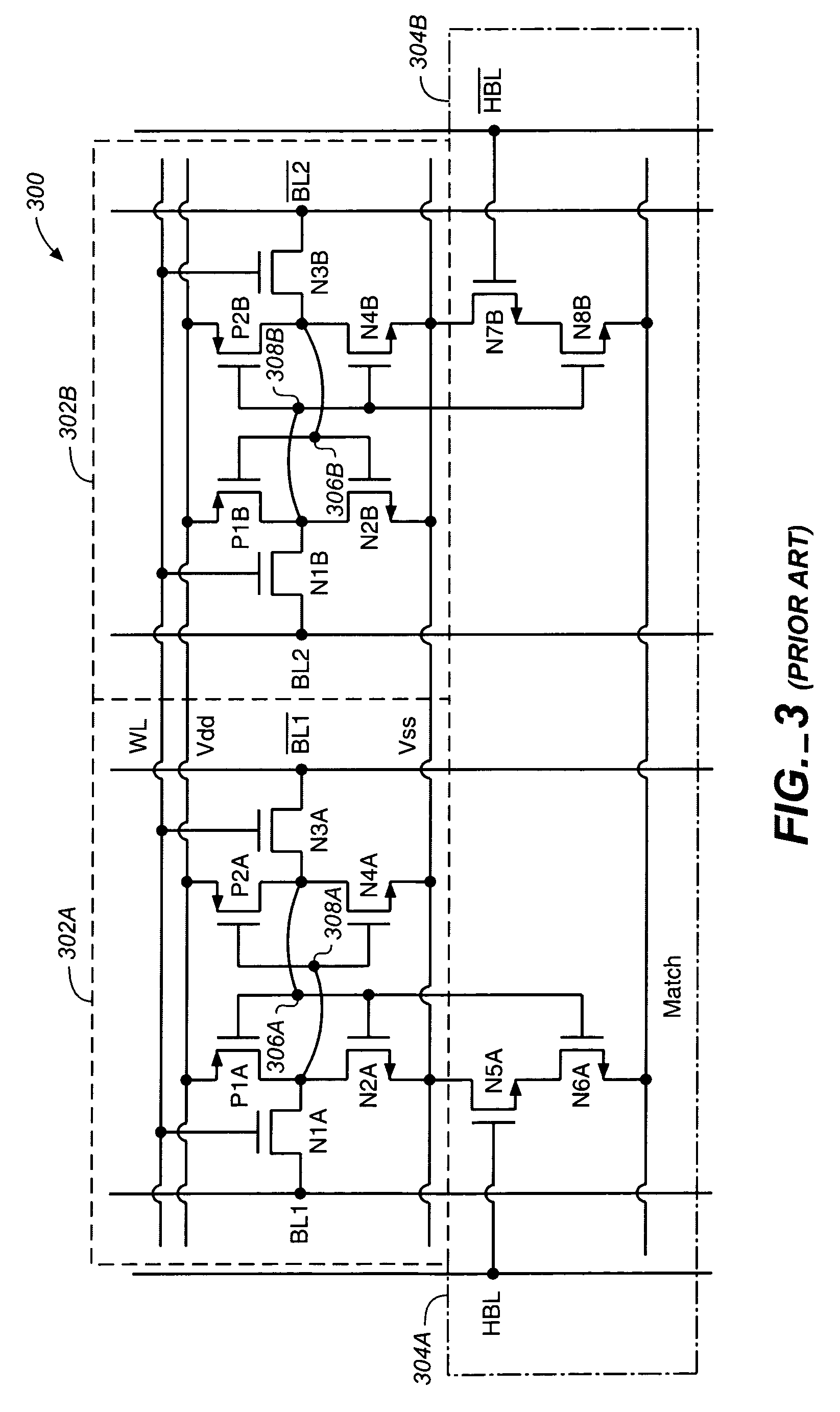Compact ternary and binary CAM bitcell architecture with no enclosed diffusion areas
a bitcell and cam bitcell technology, applied in the field of data processing, can solve the problems of significant impact on the performance and/or yield of the memory cell, difficult to set the threshold voltage vt of these devices separately, and relatively difficult to implement polysilicon and contact/metal b>1/b> patterns, so as to avoid unintended variations in electrical performance
- Summary
- Abstract
- Description
- Claims
- Application Information
AI Technical Summary
Benefits of technology
Problems solved by technology
Method used
Image
Examples
Embodiment Construction
[0040]The invention will now be discussed with regard to several specific embodiments, shown in FIGS. 6A, B and 7A, B.
[0041]Binary CAM Layout
[0042]A binary CAM (BCAM) layout is shown in FIGS. 6A and 6B, with FIG. 6A showing the diffusion regions and gate lines and FIG. 6B demonstrating the metal-1, metal-2, and metal-3 layers. For reference between the two drawings, the contacts to the substrate are shown in both drawings. Additionally, each cell is divided by dotted lines into the 6T-SRAM 602 and comparison cells 604A, 604B. With reference first to FIG. 6A, shown are n-type diffusion regions 606, 608, 610, 612 and p-type diffusion regions 614, 616. There are six separate polysilicon gate lines 620, 622, 624, 626, 628, 630. Of these, gate line 620 forms the gate of transistor N1; gate line 622 forms the gate of transistors P2, N4, and N8; gate line 624 forms the gate of transistor N3; gate line 626 forms the gate line of transistors N2, P1, and N6; gate line 628 forms the gate of tr...
PUM
 Login to View More
Login to View More Abstract
Description
Claims
Application Information
 Login to View More
Login to View More - R&D
- Intellectual Property
- Life Sciences
- Materials
- Tech Scout
- Unparalleled Data Quality
- Higher Quality Content
- 60% Fewer Hallucinations
Browse by: Latest US Patents, China's latest patents, Technical Efficacy Thesaurus, Application Domain, Technology Topic, Popular Technical Reports.
© 2025 PatSnap. All rights reserved.Legal|Privacy policy|Modern Slavery Act Transparency Statement|Sitemap|About US| Contact US: help@patsnap.com



